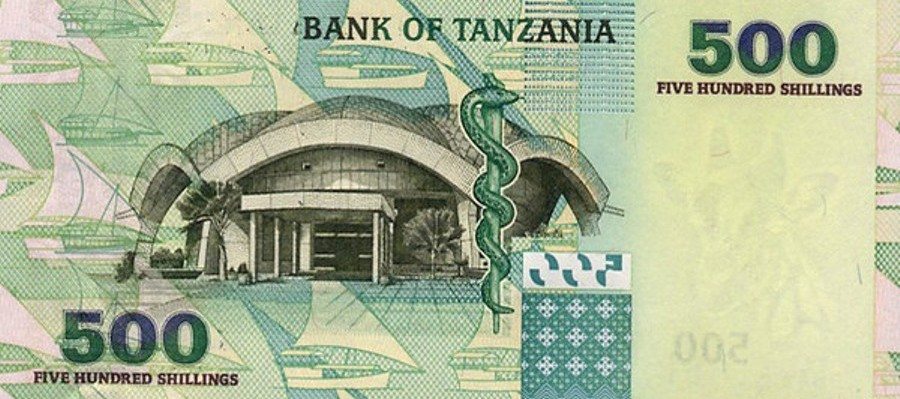The Tanzanian Shilling, also known as Shillingi is the official currency in use in the East African country of Tanzania although the use of the American Dollar is also widespread and acceptable. While this currency may not be as popular as other world currencies, there exist some interesting facts worth knowing about it.
These facts have to do with its history, the transition of bank notes, coins denomination, exchange rates with other popular world currencies and finally its value as a national heritage.
Tanzanian Shilling Facts
History Of Tanzanian Shilling
Like all civilizations around the world, the need for a medium of exchange was necessitated by the unlimited human needs. Earlier, batter trade in which goods were exchanged for goods or services was the major type of trade. This was problematic because it was not easy to put a standard value on goods and services.
However, with the coming of the colonialists, a medium of exchange was introduced by the colonial governments. Between the year 1882 and 1908, the currency in use was the Zanzibari Ryal. This was then replaced by Zanzibari Rupee between 1908 to December 1935 (1 ryal was equivalent to 2). On January 1, 1936, all the Zanzibari notes were withdrawn.
Alongside the Zanzibari currencies, all British colonies and protectorates in East Africa including Tanzania used a currency know as the East African rupee. This was used between 1906 and 1921 and was replaced by the East African Florin. The latter was then replaced by the Tanzanian shilling which exchanged at 2 shillings to 1 florin. Since the introduction of the Tanzanian shilling, it has stood the test of time as the official and favourite medium of exchange in Tanzania.
Transition Of Bank Notes
Benki Kuu Ya Tanzania (Central Bank of Tanzania) introduced banknotes on June 14, 1966. These included notes for 5, 10, 20 and 100 shillingi. However, in 1972, the 5-shillingi note was replaced by a coin. In 1985, the 50-shilling note was introduced and then followed by 200 shillings in 1986, 500 shillings in 1989 and 1000 shillings in 1990.
The 10, 20, 50 and 100 shillingi notes were all replaced by coins in 1987, 1990, 1996 and 1994 respectively. Subsequently, notes for 2000, 5000 and 10000 were introduced in 2003 and 1995 respectively. Thus banknotes that were used from 2003 were 500, 1000, 2000, 5000 and 10000.
In the year 2011, Benki Kuu Ya Tanzania revised the banknotes in terms of size, content and the watermark. While all the 2003 series had giraffe watermark, those of 2011 series use the electrotype of the value of the note and the portrait of the Tanzanian founding president Julius Kambarage Nyerere.
The 2011 notes are a few inches smaller than their predecessors are and they observe side present the Tanzanian Coat of Arms. The reverse sides differ and present important achievements and main economic activities of the country.
Tanzanian Shilling Coins Denomination
The Central Bank of Tanzania introduced coins in 1966 in the denominations of 5, 20 and 50 senti (cents) and 1 shillingi. The 5-senti coins were made from bronze, 20 senti from nickel brass while the 50 and 1 shillingi coins were crafted from cupro-nickel. In 1972, 5-shillingi cupro-nickel was introduced and then in 1977, nickel-brass 10 shillingi coin was introduced.
In 1987, cupro-nickel was replaced by nickel-clad steel in 50 and 1 shillingi and 5 (octagonal in shape) and 10 shillingi cupro-nickel were introduced. Later in 1990, nickel-clad-steel 5, 10 and 20 shillingi were introduced. Brass coins from 100 shillings were introduced in 1994, 50 shillings in 1996 and that of 200 shillingi in 1998. Currently, the coins in circulation are 50, 100 and 200 shilingi.
Tanzanian Shilling Exchange Rates
The Tanzanian shilling is not a strong currency in the international market better than many currencies in Africa. Against the major currencies, the Tanzanian currency is quite weak. The exchange rates are as follows; 0.00062 US Dollar=1 TZS, 0.00040 British Pounds Sterling=1 TZS and 0.00047 Euro= 1 TZS. Note that the Tanzanian Shilling just like every other currency is highly volatile and is subject to changes in the international trading platform as demand and supply permits.
Tanzanian Shilling As A National Heritage
The Tanzanian shilling is not just a medium of exchange; it is also a sign of national heritage for the citizens. The notes have Tanzanian Coat of Arms, important infrastructure as well as the personalities that unite the country. Tanzanians’ way of life is very social (undugu) and one person known as Julius Kambarage Nyerere; the founding president, ensures this.
Read: Facts About Ugandan Shilling
If you ask any Tanzanian, they will tell you that ujamaa or undugu is their way of life. It is some kind of socialism or communism and this is symbolized by their currency. One of their notes contains some special plants that drive the economy of the country. Another banknote also has a university building which reflects the educational power of the country.
